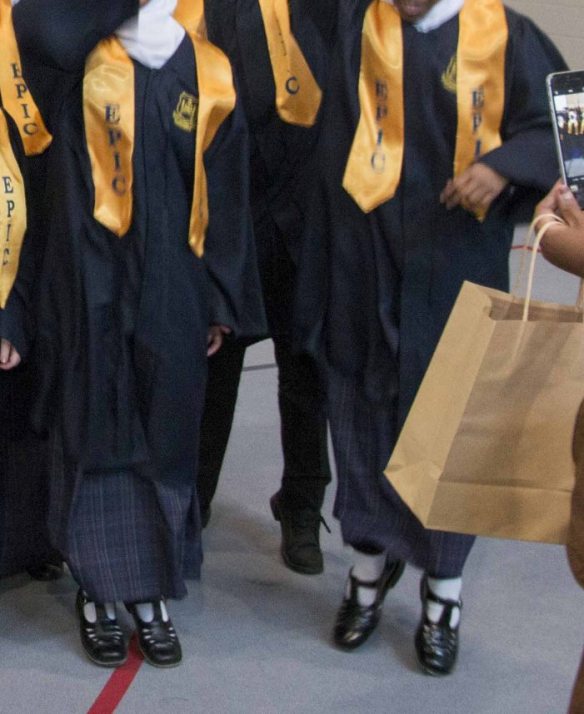Is the school dress ‘debate’ nonsense – just have a range of options, and let students choose? From The Conversation.
https://theconversation.com/school-dress-debate-is-a-nonsense-just-have-a-range-of-options-and-let-students-choose-71069
Lauren Rosewarne
For Australians growing up on a diet of American film and TV, seeing their parade of chic and shocking school outfits can only ever bristle. Here, uniform is king; over yonder it’s been a rarity since the 1960s.
In recent days a debate has been reignited about girls being “forced” to wear skirts and dresses to school. A debate that feels less like a gender firestorm and more like a disregard for history and widespread school policy.
2017 marks my 20th year out of high school; I finished with that whole shindig back in 1997. Twenty years ago, while my public school offered a delightfully fetching brown kilt or fawn shirt dress, we ladies could also don the charming green pants.
The idea that girls are being forced into chub-rub garments that they can’t easily run in seems to ignore the developments that have transpired in the great majority of schools over a great number of years. Options exist. Pick the slacks, pick the shorts. Alternate.
In researching this article I’ve spoken to friends who are teachers, school counsellors. Parents. In the private sector, in the public. No dress distress that I could locate. At all. I don’t doubt there are exceptions. To suggest, however, that there’s a widespread catastrophe here is folly.
I’m not, therefore, devoting 800 words to selling a case on why school dresses are or aren’t sexist. We’re in an education system where they aren’t commonly compulsory, so there’d be no point. This doesn’t, however, make them uninteresting. Particularly in our current social climate.
As a high schooler I vacillated between believing that having to wear the itchy green school jumper was malarkey, to actually enjoying not having to think about outfits. Sure, I likely harboured vague notions of wanting to “express” the blackness of my soul through apparel I’d self-selected, but even then I knew that having to do so daily would have soon worn thin.
Schools like uniforms for branding purposes. For social cohesion. For classroom control. In a world of teenagers with beards and boobs, they also likely help distinguish teachers from the underlings.
Parents equally favour the fixed costs, the dodged drama about fitting in, the avoided arguments.
In 2017 the uniform story has become complicated, but not because of the mystical properties of any specific garment in a school’s ensemble. Rather, we’re at the part in our social journey where the individual is king. Where freedom of expression consumes more oxygen than all those economic and social factors that once justified the uniform.
I’m not going to write an identity politics essay. It’s January and I’m saving my energies for the start of the academic year when I’ll have to have the debate weekly with my Gender Studies students. Instead, I’ll focus on policy. On how schools can best handle this issue.
Just as Australians don’t really want to steal any of the prom king/homecoming queen/school shooting hideousness from the US education system, my guess is that there’s little impetus here to abandon uniforms. With the endless parade of stories about leggings bans and spaghetti strap scandals, I dare say most Australian schools aren’t the least bit interested in that whole can o’ worms.
So the question that remains is whether uniforms can continue to serve their purpose(s) in a world in where the concept of a “male uniform” and a “female uniform” is complicated, if not even passé, and in a culture that is – rightly – trying to meet the needs of students who don’t always identify as either.
Students not identifying as male, as female, shouldn’t be forced into apparel based on their name or their genitals or their haircut or any of the other markers we used to control gender. Doing so is not only oppressive but will create the capacity for litigation. Something schools most certainly want to avoid.
So the solution – the path of least change, least legal quagmire – is so simple it seems extraordinary that the conversation is still being had. Just have a range of sanctioned options.
Approve the dresses and the blazers and the jumper and the slacks. List the items that constitute the school’s uniform and allow the students to pick. It needn’t be more complicated than this. Get rid of the “girls” list, abandon the “boys” list, and just have a list of approved apparel.
If the primary mission of schools is education, if the primary function of uniforms is cohesion, schools need to enable students – all students – to feel included so that they can concentrate on the learning. The rest is politics and wasted breath.






